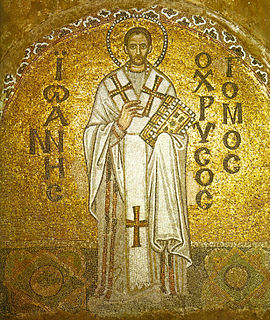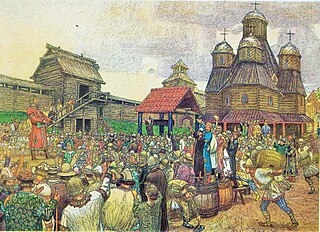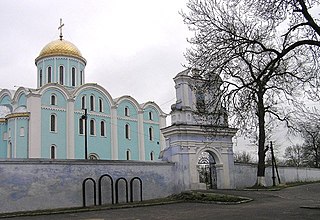
Magnus IV was King of Sweden from 1319 to 1364, King of Norway as Magnus VII from 1319 to 1355, and ruler of Scania from 1332 to 1360. By adversaries he has been called Magnus Smek.
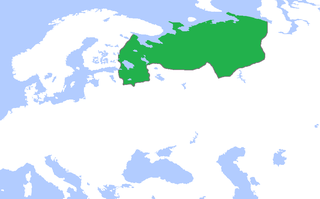
The Novgorod Republic or Novgorodian Rus' was a medieval East Slavic state from the 12th to 15th centuries, stretching from the Baltic Sea to the northern Ural Mountains, including the city of Novgorod and the Lake Ladoga regions of modern Russia. Citizens referred to their city-state as "His Majesty Lord Novgorod the Great", or more often as "Lord Novgorod the Great". The Republic prospered as the easternmost port of the Hanseatic League and its Slavic, Baltic and Finnic people were much influenced by the culture of the Viking-Varangians and Byzantine people.

The Cathedral of St. Sophia in Veliky Novgorod is the cathedral church of the Archbishop of Novgorod and the mother church of the Novgorodian Eparchy.

The fortress at Shlisselburg was first built in 1323. It was the scene of many conflicts between Russia and Sweden and changed hands between the two empires. During World War II, it was heavily damaged. Today it is a UNESCO World Heritage site.
The Battle of Shelon was a decisive battle between the forces of the Grand Duchy of Moscow under Ivan III and the army of the Novgorod Republic, which took place on the Shelon River on 14 July 1471. Novgorod suffered a major defeat and ended with the de facto unconditional surrender of the city. Novgorod was absorbed by Muscovy in 1478.

The Legend of the White Cowl is a Russian Orthodox story first recorded by the monk Philotheus of Pskov in 1510. It tells of the passage of a religious relic of great significance through great danger from Rome to Constantinople and finally to Moscow, at a time that many Russians believed the pre-eminent Christian Church in the world to be transferred in Moscow.
Swedish–Novgorodian Wars were a series of conflicts in the 12th and 13th centuries between the Republic of Novgorod and medieval Sweden over control of the Gulf of Finland, an area vital to the Hanseatic League and part of the Varangian-Byzantine trade route. The Swedish attacks against Orthodox Russians had religious overtones, but before the 14th century there is no knowledge of official crusade bulls issued by the pope.

Vsevolod Mstislavich, the patron saint of the city of Pskov, ruled as Prince of Novgorod in 1117–32, Prince of Pereslavl (1132) and Prince of Pskov in 1137–38.

The Novgorod and Staraya Russa Diocese is one of the oldest offices in the Russian Orthodox Church. The medieval archbishops of Novgorod were among the most important figures in medieval Russian history and culture and their successors have continued to play significant roles in Russian history up to the present day. They patronized a significant number of churches in and around the city,, and their artistic and architectural embellishments influenced later Russian art and architecture; they also patronized chronicle-writing, a crucial source on medieval Russian history.
Ontsifor Lukinich was a posadnik of Novgorod the Great in 1350–1354. He came from a Novgorodian boyar family that gave a number of posadniks to the city. He is most famous for reforming the office in 1359, increasing the number of posadniks and creating a ruling collective in the city.
Ioann was Archbishop of Novgorod the Great and Pskov from 1388 until his retirement in 1415. He is not to be confused with Archbishop Ilya, who ruled in the twelfth century, and who is often referred to as Ioann in hagiographic literature but was apparently called Ilya during his archiepiscopate.

Gennadius was Archbishop of Novgorod the Great and Pskov from 1484 to 1504.
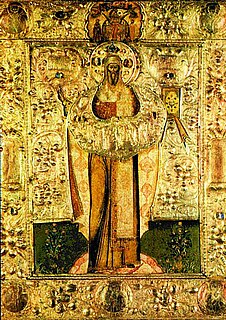
Evfimy II, Archbishop of Novgorod the Great and Pskov from 1429 to 1458, was one of the most prolific patrons of the arts and architecture of all the Novgorodian archbishops.

The Church of the Transfiguration of the Savior is a former Russian Orthodox Church that stands on Ilyina (Elijah) Street in Veliky Novgorod just east of the Marketplace. The current building was built in 1374 and frescoed by Theophanes the Greek in 1378. Substantial portions of those frescoes still remain, including the Christ Pantocrator in the dome, a number of saints inside the south entrance, and The Old Testament Trinity in the western vestry, as well as others. The current building is now a museum, part of the Novgorod State Museum-Preserve.

The Battle of the Novogorodians with the Suzdalians is a twelfth-century episode in which the city of Novgorod the Great was said to have been miraculously delivered from a besieging army from Suzdalia In the fifteenth and sixteenth centuries, the episode became the basis for several hagiographic tales in the Russian church, as well as two large icons executed in the late fifteenth and early sixteenth centuries
The Church of St. Cosmas and Damian on Kholop Street, was a church in medieval Novgorod the Great located in the Nerev End, just north of the Detinets. It was a wooden church first built by Fedor Khotovich in 1271. It was rebuilt in 1303, probably after a fire in the Nerev End. and about a generation later was the parish church of Archbishop Vasilii Kalika prior to his election as archbishop of Novgorod in 1330. Vasilii's parish church in Kholop Street was rebuilt in 1350 by the Posadnik (mayor) Iurii Ivanovich That church apparently burned in 1352, the year Archbishop Vasilii died of the plague. It is unclear if a new church was ever built on the site; there is no longer a church at that location, which is now a park north of the Novgorod Kremlin.
Serapion was Archbishop of Novgorod the Great and Pskov from 1506 to 1509. He is a saint of the Russian Orthodox Church; his feast day is March 16 by the Julian calendar.



